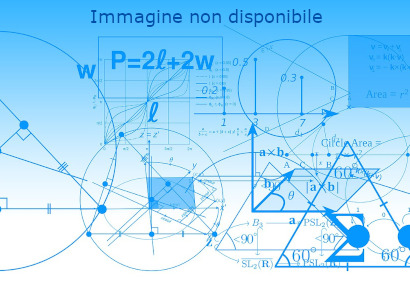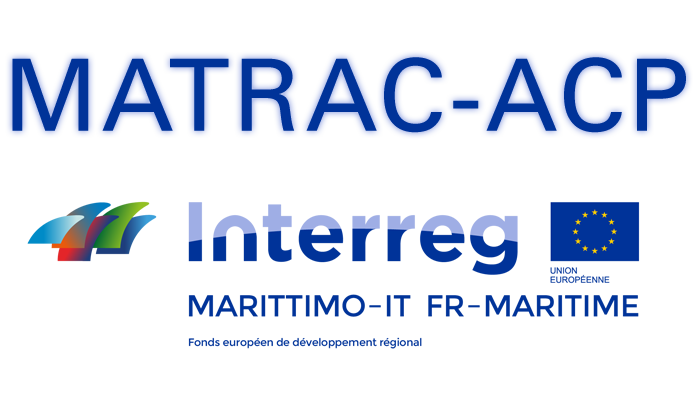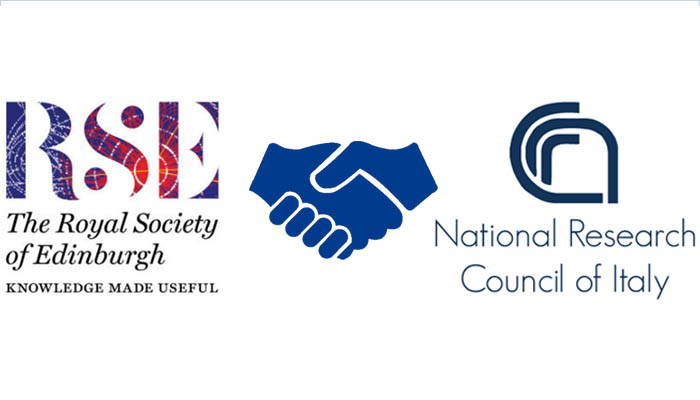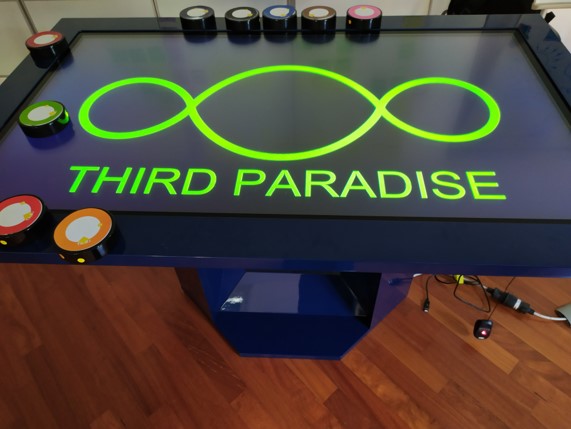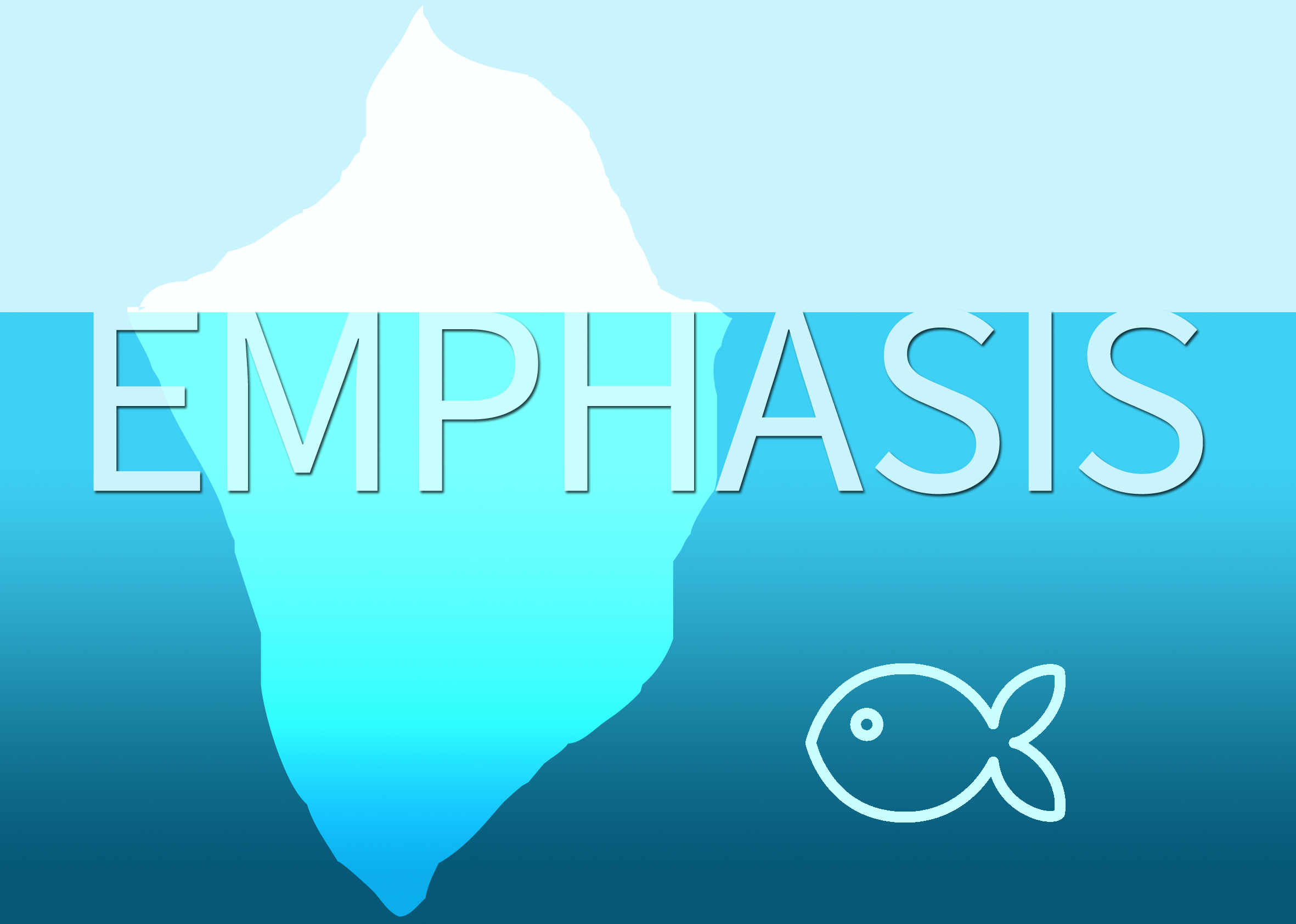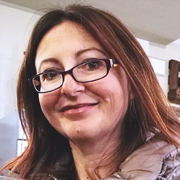Michela Mortara
Senior Researcher
Michela Mortara graduated in July 1999 in Computer Science from the University of Genova and since then she is member of the Shape Modeling Group at IMATI-CNR Genova. She started her research activities on 2D shape analysis for polygon morphing and surface reconstruction from planar sections, with a particular focus on the structural aspects of shapes. Then she moved to the 3D setting, focusing on morphological analysis, curvature estimation, skeleton extraction and segmentation of 3D objects. In May 2004 she got a Ph.D. in Robotics. From 2004 to 2008 she joined the AIM@SHAPE Network of Excellence working on analysis and structuring of 3D shapes as a mean to devise the semantics (meaning or functionality) of shapes and their parts. In this framework she developed a method to automatically identify human body parts, compute anthropometric measures and locate standard landmarks on human body models which received the 2006 Computers&Graphics best paper award, with further applications in the construction of control skeletons for animation. Then she worked on semantic rendering and on the automatic selection of the best view of 3D object based on their visible salient features. She has been actively involved in the FOCUS K3D project promoting the adoption of CG and Knowledge technologies in several application domains; in particular, she followed the Gaming and Simulation, Medicine and BioInformatics activities. From 2010 to 2014 she was involved in GALA - Games and Learning Alliance, leading the Special Interest Group on Serious Games for Humanities and Heritage. More recently she is working on 3D modelling for urban intelligence and geosciences, with applications to environmental monitoring and interpretation of geological structures. She is currently principal investigator for IMATI for the active projects MATRAC-ACP, GEO3D and RSE-CNR.
Research Activity
Geometric Modelling; 3D Shape Analysis and Understanding; Segmentation and Skeleton extraction; Serious Games
Projects
Publications
Sea Monitoring Made Simple and Efficient
S. Berretta, D. Cabiddu, M. Mortara, and M. Spagnuolo
Remote sensing provides almost global spatial coverage, but with limits in resolution and accuracy. Ground stations, conversely, provide very accurate coverage with high temporal resolution, but spars...
CNR@People | Link
2019, Journal article
A pipeline for the preparation of artefacts that provides annotations persistence
A. Scalas, M. Mortara, and M. Spagnuolo
Thanks to increasing efforts towards 3D digitisation in the Cultural Heritage domain, we are seeing increasing interest in computer graphics tools that can concretely support innovative curatorial and...
CNR@People | DOI: 10.1016/j.culher.2019.06.006
2018, Journal article
3D Virtual environments as effective learning contexts for cultural heritage
M. Mortara and C. E. Catalano
3D technology can be a valid support to cultural heritage not only for visual presentationand documentation, but also for communication and educational purposes. In this paper, we will discussthe pote...
CNR@People | DOI: 10.17471/2499-4324/1026
2016, Journal article
Shape and Semantics Modelling: la ricerca dell'IMATI - CNR per la rappresentazione, l'analisi e la documentazione di modelli digitali 3D e le sue applicazioni ai Beni Culturali
B. Falcidieno, F. Giannini, M. Spagnuolo, M. Attene, S. Biasotti, C. Catalano,M. De Martino, M. Monti, M. Mortara, e C. Pizzi
La missione dell'Istituto di Matematica Applicata e Tecnologie Informatiche "E. Magenes" (IMATI), conle sue tre sezioni di Pavia, Milano e Genova, è quella di fornire le conoscenze e le infrast...
CNR@People | Link
2014, Journal article
Best practices for an effective design and evaluation of serious games
C.E. Catalano, A.M. Luccini, and M. Mortara
There is an increasing awareness about the potential of serious games for education and training in many disciplines. However, research still witnesses a lack of methodologies, guidelines and best pra...
CNR@People | Link
2014, Journal article
Learning cultural heritage by serious games
M. Mortara, C.E. Catalano, F. Bellotti, G. Fiucci, M. Houry-Panchetti, and P. Petridis
Immersive technologies such as virtual environments and augmented reality have a clear potential to support the experiencing of cultural heritage by the large public, complementing the current tools a...
CNR@People | DOI: 10.1016/j.culher.2013.04.004
2013, Journal article
Geometry and context for semantic correspondences and functionality recognition in man-made 3D shapes
H. Laga H., M. Mortara, and M. Spagnuolo
We address the problem of automatic recognition of functional parts of man-made 3D shapes in the presence of significant geometric and topological variations. We observe that under such challenging ci...
CNR@People | DOI: 10.1145/2516971.2516975
2013, Editorial in journal
Introduction to special issue on serious games for cultural heritage
Mortara M.; Bellotti F.
N/A
CNR@People | DOI: 10.1145/2460376.2460377
2011, Journal article
Semantics and 3D media: Current issues and perspectives
C.E. Catalano, M. Mortara, M. Spagnuolo, and B. Falcidieno
3D digital content has become popular as emerging media that can be created, edited and shared by users in a collaborative environment, likewise images and videos. The popularity of 3D media is not co...
CNR@People | DOI: 10.1016/j.cag.2011.03.040
2009, Journal article
Semantics-driven best view of 3D shapes
Michela Mortara; Michela Spagnuolo
The problem of automatically selecting the pose of a 3D object that corresponds to the most informativeand intuitive view of the shape is known as the best view problem. In this paper we address the s...
CNR@People | DOI: 10.1016/j.cag.2009.03.003
2008, Journal article
Hierarchical Convex Approximation of 3D Shapes for Fast Region Selection
Attene Marco; Mortara Michela; Spagnuolo Michela; Falcidieno Bianca
Given a 3D solid model S represented by a tetrahedral mesh, we describe a novel algorithm to compute a hierarchyof convex polyhedra that tightly enclose S. The hierarchy can be browsed at interactive ...
CNR@People | DOI: 10.1111/j.1467-8659.2008.01271.x
2007, Journal article
An ontology of virtual humans-incorporating semantics into human shapes
Mario Gutiérrez A.; Alejandra Garcìa-Rojas ; Daniel Thalmann ; Frederic Vexo ; Laurent Moccozet ; Nadia Magnenat-Thalmann ; Michela Mortara ; Michela Spagnuolo
Most of the efforts concerning graphical representations of humans (Virtual Humans) have been focused on synthesizing geometry for static or animated shapes. The next step is to consider a human body ...
CNR@People | DOI: 10.1007/s00371-006-0093-4
2006, Journal article
Computational methods for understanding 3D shapes
Attene M.; Biasotti S.; Mortara M.; Patané G.; Spagnuolo M.; Falcidieno B.
Understanding shapes has been a challenging issue for many years, firstly motivated by computer vision and more recently by manycomplex applications in diverse fields, such as medical imaging, animati...
CNR@People | DOI: 10.1016/j.cag.2006.02.007
2006, Journal article
From geometric to semantic human body models
M. Mortara; G. Patane'; M. Spagnuolo
The paper introduces a framework for the automatic extraction and annotation of anthropometric features from human body models. The framework is based on the construction of a structural model of the ...
CNR@People | DOI: 10.1016/j.cag.2006.01.024
2004, Journal article
Blowing Bubbles for Multi-Scale Analysis and Decomposition of Triangle Meshes
Michela Mortara; Giuseppe Patané ; Michela Spagnuolo; Bianca Falcidieno; Jarek Rossignac
Tools for the automatic decomposition of a surface into shape features will facilitate the editing,matching, texturing, morphing, compression and simplification of three-dimensional shapes. Differentf...
CNR@People | DOI: 10.1007/s00453-003-1051-4
2002, Journal article
Shape covering for skeleton extraction.
Mortara M., Patané G.
N/A
CNR@People
Skeletal structures
Biasotti S.; D.Attali; Boissonnat J-D.; Edelsbrunner H.; Elber G.; Mortara M.; Sanniti di Baja G.; Spagnuolo M.; Tanase M.; Veltkamp R.
Shape Descriptors are compact and expressive representations of objects suitable for solving problems like recognition, classification, or retrieval of shapes, tasks that are computationally expensive...
CNR@People | DOI: 10.1007/978-3-540-33265-7_5
3D FEATURE RECOGNITION FOR THE ASSESSMENT OF BUILDINGS' ENERGY EFFICIENCY
Daniela Cabiddu, Michela Mortara, Chiara Romanengo, Andreas Scalas, Alice Bellazzi, Lorenzo Belussi,Ludovico Danza, and Matteo Ghellere
The real assets, procedures, systems,and subsystems of a city can be virtually represented throughan urban digital twin(DT),which integrates heterogeneous data to learn and evolve with the physical ci...
CNR@People
2023, Conference proceedings
Mathematical Methods for the Shape Analysis and Indexing of Tangible CH Artefacts
Elia Moscoso Thompson, Chiara Romanengo, Andreas Scalas, Chiara E. Catalano, Michela Mortara, Silvia Biasotti, Bianca Falcidieno, and Michela Spagnuolo
N/A
CNR@People | DOI: 10.1007/978-981-99-3679-3_7
2023, Meeting abstracts
Towards immersive urban digital twins
Brigida Bonino, Daniela Cabiddu, Michela Mortara, Katia Lupinetti, and Simone Pittaluga
Urban digital twins are virtual representations ofphysical systems,subsystems,and processes of a city.The construction of a three-dimensional geometric model of the city provides the basis for the dev...
CNR@People
2021, Conference proceedings
3D modeling and integration of heterogeneous geo-data
M. Miola, D. Cabiddu, S. Pittaluga, M. Mortara, M. Vetuschi Zuccolini and G. Imitazione
This paper tackles the volumetric representation of geophysical and geotechnical data, gathered during exploration surveysof the subsoil. The creation of a 3D model as support to geological interpreta...
CNR@People | DOI: 10.2312/stag.20211473
2021, Meeting abstracts
A Change of Support Model Optimization for Environmental Monitoring
S. Berretta, D. Cabiddu, M. Mortara, S. Pittaluga and M. Vetuschi Zuccolini
Geometric representations of spatial domains in environmental applications are used to structure, access andrender surveyed data; the survey domain is often represented as a discrete regular grid with...
CNR@People
2021, Meeting abstracts
An innovative sampling strategy for the monitoring of pollutants in harbours
S. Berretta, D. Cabiddu, M. Mortara, S. Pittaluga, M. Spagnuolo, M. Vetuschi Zuccolini
N/A
CNR@People
2021, Conference proceedings
Challenges in the digitisation of a high-reflective artwork
C.E. Catalano, E. Brunetto, M. Mortara and C. Pizzi
In this paper we report about the photogrammetric acquisition and reconstruction of a contemporary artwork, performed by offthe-shelf software. The ceramic piece of art is "Il Libro d'Oro del Terzo Pa...
CNR@People
2021, Meeting abstracts
Smart and Efficient Marine Water Monitoring
S. Berretta, D. Cabiddu, S. Pittaluga, M. Mortara, M. Spagnuolo and M. Vetuschi Zuccolini
N/A
CNR@People
2020, Conference proceedings
A first step towards cage-based deformation in Virtual Reality
A. Scalas, Y. Zhu, F. Giannini, R. Lou, K. Lupinetti, M. Monti, M. Mortara and M. Spagnuolo
The advent of low cost technologies makes the use of immersive virtual environments more interesting for several applicationcontexts. 3D models are largely used in such environments for providing feel...
CNR@People | DOI: 10.2312/stag20201246
2020, Conference proceedings
The challenge of cultural heritage visitation: A problem demanding new approaches
A.Stewart, C. E. Catalano, E. Elyan, A. Giachetti, J. Isaacs, M. Mortara, P. Reid and H. Vosper
Tangible cultural heritage includes assets dating across millennia characterising many of the world's major cityscapes and landscapes. In many cases massive and spectacular architecture has been re-pu...
CNR@People | Link
2019, Conference proceedings
An automatic approach for the classification of ancient clay statuettes based on heads features recognition
A. Scalas, V. Vassallo, M. Mortara, M. Spagnuolo, and S. Hermon
In recent years, quantitative approaches based on mathematical theories and ICT tools, known under the terms of digital,computational, and virtual archaeology, are more and more involved in the tradit...
CNR@People | DOI: 10.2312/gch.20191352
2019, Conference proceedings
Robotics and adaptive sampling techniques for harbor waters monitoring: the MATRAC-ACP project
Massimo Caccia, (1); Roberta Ferretti, (1); Angelo Odetti, (1); Gabriele Bruzzone, (1); Michela Spagnuolo, (2); Michela Mortara, (2); Serena Berretta, (2); Daniela Cabiddu, (2); Simone Pittaluga, (2); Marino Vetuschi Zuccolini, (3); Lorenzo Brignone, (4); ;
The MATRAC-ACP (Adaptive Real-time monitoringwith sampling automation - Harbor and coastal waters) projectaims at defining innovative water monitoring protocols based onthe use of Unmanned Marine Vehi...
CNR@People | DOI: 10.1109/OCEANSE.2019.8867568
2018, Conference proceedings
Adaptive environmental sampling: The interplay between Geostatistics and Geometry
S. Berretta, D. Cabiddu, S. Pittaluga, M. Mortara, M Spagnuolo, and M. Vetuschi-Zuccolini
In environmental surveys a large sampling effort is required to produce accurate geostatistical maps representing the distributionof environmental variables, and the analysis of each sample is often e...
CNR@People | DOI: 10.2312/stag.20181306
2018, Conference posters
Geometric and topological tools for quantitative analysis in archaeology: the Ayia Irini case study
A.Scalas, V. Vassallo, M. Mortara, M. Spagnuolo
N/A
CNR@People
2018, Conference posters
Real-time volumetric modelling based on adaptive sampling of environmental scalar fields derived by uncertainty maps
S. Berretta, D. Cabiddu, S. Pittaluga, M. Mortara, M Spagnuolo, and M. Vetuschi-Zuccolini
N/A
CNR@People
2018, Conference proceedings
Shape analysis techniques for the Ayia Irini case study
A. Scalas, V. Vassallo, M. Mortara, M. Spagnuolo, and S. Hermon
The typical approach for archaeological analysis is mainly qualitative and, as such, subjective. Even when some measures arereported in the documentation of artefacts, they are often approximate or am...
CNR@People | DOI: 10.2312/gch.20181373
2017, Conference proceedings
3D Annotation Transfer
A. Scalas, M. Mortara, and M. Spagnuolo
In the last few years, there has been an increase in digitalization efforts within the Cultural Heritage field, which boosted theinterest for new strategies to improve documentation standards. While t...
CNR@People | DOI: 10.2312/gch.20171295
2017, Conference proceedings
Streamlining the preparation of scanned 3D artifacts to support digital analysis and processing: the GRAVITATE case study
M. Mortara, C. Pizzi, and M. Spagnuolo
Digitally acquired 3D models of cultural assets are not always ready for further processing. Sometimes, the digital surfacepresents geometric or topological defects that may hinder downstream surface ...
CNR@People | DOI: 10.2312/gch.20171309
2016, Conference proceedings
The shape and semantics modelling group
B. Falcidieno, F. Giannini, M. Spagnuolo, R. Albertoni, M. Attene, S. Biasotti, C. E. Catalano,M. De Martino, M. Monti, M. Mortara, G. Patane', and C. Pizzi
Presentiamo le attivit'a del gruppo di ricerca denominato "Shape and Semantics Modelling" operante presso la sezione diGenova dell'Istituto di Matematica Applicata e Tecnologie Informatiche "E. Magene...
CNR@People
2015, Conference proceedings
Investigating the Deployment of Serious Games in Secondary Education: A Pilot Study Inspired by Design-Based Research
J. Earp, C. E. Catalano, and M. Mortara
This paper describes a pilot deployment in lower secondary school ofa serious game dedicated to the learning of history. The primary aim of the initiativewas to investigate the integration of Serious ...
CNR@People | DOI: 10.1007/978-3-319-22960-7_2
2014, Conference proceedings
Evaluating the effectiveness of serious games for cultural awareness: the Icura user study
M. Mortara, C.E. Catalano, G. Fiucci, and M. Derntl
There is an increasing awareness about the potential of serious games for education and training in many disciplines. However, research still witnesses a lack of methodologies, guidelines and best pra...
CNR@People | DOI: 10.1007/978-3-319-12157-4_22
2014, Conference proceedings
Investigating the deployment of serious games in secondary education: a pilot study Inspired by design-based research
J. Earp, C.E. Catalano, and M. Mortara
This paper describes a pilot deployment in lower secondary school of a serious game dedicated to the learning of history. The primary aim of the initi-ative was to investigate the integration of Serio...
CNR@People
2014, Conference proceedings
Reasoning About Shape in Complex Datasets: Geometry, Structure and Semantics
S. Biasotti, H. Laga, M. Mortara, and M. Spagnuolo
In recent years, acquisition and modelling of 3D data has gained a significant boost due to the availability of commodity devices. Digital 3D shape models are becoming a key component in many industri...
CNR@People | DOI: 10.2312/egt.20141018
2014, Conference proceedings
Unveiling California history through serious games: Fort Ross virtual warehouse
N. Lercari, M. Mortara, and M. Forte
Between 1812 and 1841, Fort Ross was a Russian fur trading outpost and multi-cultural colony located in the Northern California coast. Current Fort Ross is a popular California State Historic Park vis...
CNR@People | DOI: 10.1007/978-3-319-12157-4_19
2012, Conference proceedings
SHREC'12 Track: Stability on Abstract Shapes
S. Biasotti, X. Bai, B. Bustos, A. Cerri, D. Giorgi, L. Li, M. Mortara, I. Sipiran, S. Zhang, and M. Spagnuolo
This contribution reports the results of the SHREC 2012 track: Stability on Abstract Shapes. This track saw six registrations of which only three participants effectively sent the results of their run...
CNR@People | DOI: 10.2312/3DOR/3DOR12/101-107
2010, Conference proceedings
3D shape retrieval based on best view selection
D. Giorgi, M. Mortara, and M. Spagnuolo
We describe the preliminary results of an ongoing work on content-based 3D retrieval, based on the selection of the best view of 3D objects according to semantic criteria. Experiments show that a sing...
CNR@People | DOI: 10.1145/1877808.1877812
2009, Conference proceedings
Computer Graphics Recipes for Endowing 3D Shapes with Semantics in Virtual Worlds
Michela Mortara; Chiara Eva Catalano
The massive use of 3D models increased also in the Gaming community the awareness of the benefits of a digital representation of objects involving not only geometric data but also their semantics. Enc...
CNR@People | Link
2009, Conference proceedings
ProTailor: a Parallel Operator for Extremely Fast Shape Analysis in Bioinformatics Applications
Michela Mortara; Antonella Galizia
The geometric shape of molecular surfaces stronglyinfluences the docking processes where, although electrostatic,hydrophobic and van der Waals interactions affect greatly thebinding affinity of the mo...
CNR@People | DOI: 10.1109/PDP.2009.47
2008, Conference proceedings
Semantic-driven best view of 3D shapes
Mortara M., Spagnuolo M.
N/A
CNR@People
2007, Conference proceedings
Knowledge-based extraction of control skeletons for animation
F. Dellas; L. Moccozet; N. Magnenat-Thalmann; M. Mortara; G. Patanè; M. Spagnuolo; B. Falcidieno
In this paper we propose a method for the automatic extractionand annotation of the animation control skeleton ofvirtual humans, which relies on an a-priori knowledge ofthe human anatomy. The method i...
CNR@People | DOI: 10.1109/SMI.2007.24
2007, Conference proceedings
The Role of Semantics in Shape Modeling and Reasoning
Falcidieno B., Attene M., Mortara M.
N/A
CNR@People
2006, Conference proceedings
Mesh segmentation - a comparative study
Attene M.; Katz, S.; Mortara M.; Patané G.; Spagnuolo M.; Tal A.
Mesh segmentation has become an important componentin many applications in computer graphics. In thelast several years, many algorithms have been proposed inthis growing area, offering a diversity of ...
CNR@People | DOI: 10.1109/SMI.2006.24
2006, Conference posters
Semantic Human 3D Shapes annotation for Animation
Dellas F., Moccozet L., Magnenat-Thalmann N., Patané G., M.Mortara, Spagnuolo M., Falcidieno B.
N/A
CNR@People
2006, Conference proceedings
Topological, Geometric and Structural Approaches to Enhance Shape Information
Attene M.; Biasotti S.; Mortara M.; Patané G.; Spagnuolo M.; Falcidieno B.
Nowadays, the increasing power of hardware components has made available a huge amount of digital models, more and more complex and detailed, as needed in many innovative research fields such as medic...
CNR@People | DOI: 10.2312/LocalChapterEvents/ItalianChapConf2006/007-013
2005, Conference proceedings
An ontology of virtual humans: incorporating semantics into human shape
Gutierrez M., Vexo F., Thalmann D., Mortara M., Spagnuolo M., Moccozet L., Magnenat-Thalmann N.
N/A
CNR@People
2005, Conference proceedings
An ontology of virtual humans: incorporating semantics into human shapes
A. Garcìa-Rojas; D. Thalmann; F. Vexo ;L. Moccozet ;N. Magnenat-Thalmann;M. Mortara; M. Spagnuolo; M. Gutierrez
Most of the efforts concerning the digital representationof humans (Virtual Humans, or VHs) have been focused onsynthesizing geometry for static or animated shapes. Thenext step is to consider VHs as ...
CNR@People | Link
2005, Conference proceedings
Bridging Geometry and Semantics for Object Manipulation and Grasping
Abaci T., Mortara M., Patané G., Spagnuolo M., Vexo F., Thalmann D.
N/A
CNR@People
2004, Conference posters
A multi-resolutive extraction of geometric descriptors for virtual shapes and humans
Biasotti S., Falcidieno B., Marini S., Mortara M., Patané G., Spagnuolo M., Tangelder H.
N/A
CNR@People
2004, Conference proceedings
Animatable Human Body Reconstruction from 3D Scan Data using Templates
Laurent Moccozet, Fabien Dellas, Nadia Magnenat-Thalmann, Silvia Biasotti, Michela Mortara, Bianca Falcidieno, Patrick Min, Remco Veltkamp
Many detailed 3D datasets of human bodiesare available, and with current scanning technology,new ones are relatively easy to produce. Asa result, more realistic looking animations becomepossible, but ...
CNR@People
2004, Conference proceedings
Plumber: a method for a multi-scale decomposition of 3D shapes into tubular primitives and bodies
M. Mortara; G. Patanè; M. Spagnuolo; B. Falcidieno; J. Rossignac
Plumber is a specialized shape classification method for detecting tubular features of 3D objects represented by a trianglemesh. The Plumber algorithm segments a surface into connected components that...
CNR@People | Link
2002, Conference proceedings
Affine-invariant skeleton of 3D shapes
M. Mortara and G. Patanè
Different application fields have shown increasing interest in shape description oriented to recognition and similarity issues. Beyond the application aims, the capability of handling details separati...
CNR@People | DOI: 10.1109/SMI.2002.1003552
Knowledge-based extraction of control skeletons for animation
Dellas F., Moccozet L., Magnenat-Thalmann N., Patané G. , Mortara M. , Spagnuolo M. , Falcidieno B.
N/A
CNR@People
2006, Curatorship of books
Mesh Segmentation: a Comparative Study
Attene M, Katz S., Mortara M., Patané G., Spagnuolo M., Tal A.
N/A
CNR@People
2005, Curatorship of books
An Ontology of Virtual Humans: Incorporating Semantics into Human Shapes
Garcia-Rojas A., Thalmann D., Vexo F., Moccozet L., Magnenat-Thalmann N., Mortara M., Spagnuolo M., Gutierrez M.
N/A
CNR@People
2004, Curatorship of books
Plumber: a method for a multi-scale decomposition of 3D shapes into tubular primitives and bodies
Mortara M., Patané G., Spagnuolo M., Falcidieno B., Rossignac J.
N/A
CNR@People
PLUMBER: an interactive interface for multi-scale segmentation of triangulated surfaces
Mortara M., Patané G.
N/A
CNR@People
Adaptive sampling of environmental variables (ASEV)
S. Berretta, D. Cabiddu, S. Pittaluga, M. Mortara,M. Spagnuolo, and M. Vetuschi Zuccolini
In environmental surveys a large sampling effort is required to produce accurate geostatistical maps, representingthe distribution of environmental variables and the analysis of each sample is often e...
CNR@People | Link
2018, Project report
Analisi dei protocolli esistenti e linee guida per procedure di monitoraggio innovative delle acque portuali
Barcaro Rosangela 1 Ferretti Roberta 1 Zuccolini Marino 2 Cabiddu Daniela 3 Mortara Michela 3
Project: MATRAC-ACPDeliverable number: Attività T1.1 - Prodotto T1.1.1Deliverable Title: "Analisi dei protocolli esistenti e linee guida per procedure di monitoraggio innovative delle acque por...
CNR@People
2018, Project report
Piano della comunicazione del progetto Monitoraggio Adattivo in Tempo Reale con Automatizzazione del Campionamento - Aree Costiere Portuali - MATRAC ACP
Barcaro Rosangela 1 Caccia Massimo 1 Ferretti Roberta 1 Zuccolini Marino 2 Cabiddu Daniela 3 Mortara Michela 3 Spagnuolo Michela 3
Piano della comunicazione: C.1 - TV, stampa e implementazione sito internet e social media; C.2 - Eventi e realizzazione supporti di comunicazione sul progetto
CNR@People | Link
2014, Research report
Deliverable D3.4 - serious games application fields
M. Mortara and C.E. Catalano
N/A
CNR@People | Link
2014, Technical report
Design and implementation of a semantic layer aimed at serious game development
A. Repetto, M. Mortara, and C.E. Catalano
Recent videogames contain complex virtual worlds, full of highly detailed virtual objects. Although they may look very similar to their real counterparts, they offer a limited degree of interaction, b...
CNR@People
2014, Research report
GALA Network of Excellence - Fourth Annual Report (CNR)
J. Earp and M. Mortara
N/A
CNR@People
2013, Research report
GALA Network of Excellence - Third Annual Report (CNR)
J. Earp and M. Mortara
N/A
CNR@People
2010, Research report
Deliverable D1.4.1: Road map for Future Research
C. Catalano, M. Spagnuolo, M. Mortara, B. Falcidieno, A. Stork, M. Koch, P. Alliez, F. Cazals, M. Yvenec, W. Huerst, R. Veltkamp, M. Pitikakis, C. Charbonnier, L. Assassi, J. Kim, N. Magnenat-Thalmann, P. Salamin, D. Thalmann, T. Dokken,and E. Quak
This document contains the deliverable D1.4.1 of the FOCUS K3D Coordination Action.Deliverable D1.4.1 is the final technical report of Task 1.4 entitled "Road map for FutureResearch". This deliverable...
CNR@People
2008, Technical report
Hierarchical Convex Approximation of 3D Shapes for Fast Region Selection
Attene M., Mortara M., Spagnuolo M., Falcidieno B.
N/A
CNR@People
2006, Technical report
Multi-Segmentation and Annotation of 3D Surface Meshes
Attene M., Biasotti S., Mortara M., Patané G., Robbiano F., Albertoni R., Catalano C., Marini S., Spagnuolo M., Falcidieno B.
N/A
CNR@People
ShapeAnnotator - Multi-segmentation and semantic annotation of 3D surface meshes
Marco Attene, Francesco Robbiano, Michela Spagnuolo, Bianca Falcidieno, Silvia Biasotti, Michela Mortara, Giuseppe Patane, Riccardo Albertorni, Chiara Catalano, Simone Marini
The ShapeAnnotator provides an interactive GUI for the inspection, segmentation and semantic annotation of 3D surface meshes. After loading a mesh and a domain of expertise formalized as an OWL ontolo...
CNR@People | Link
